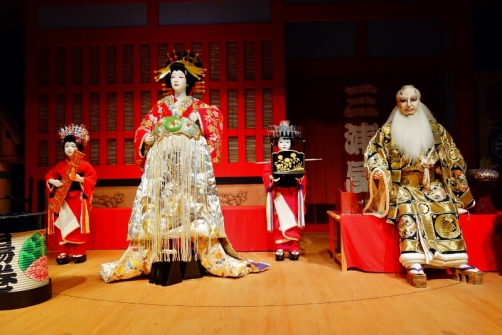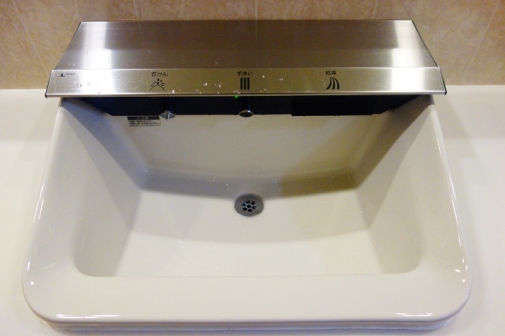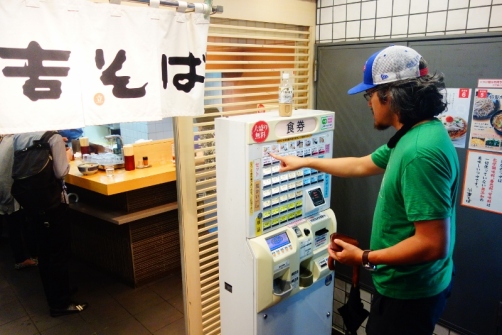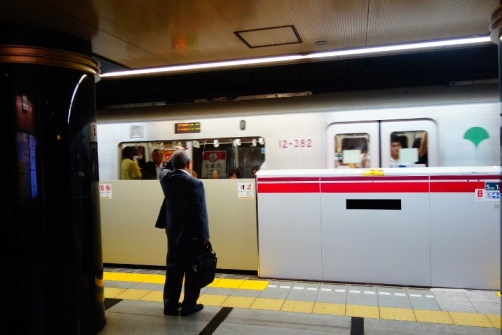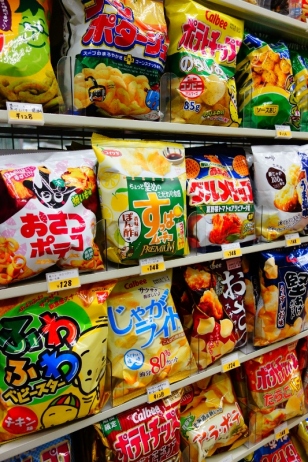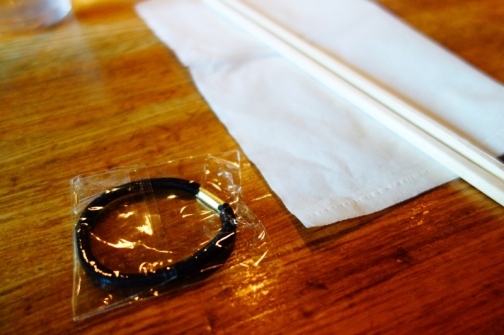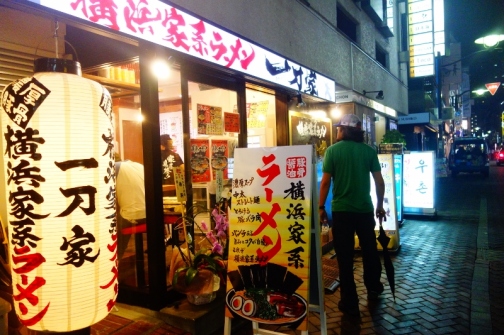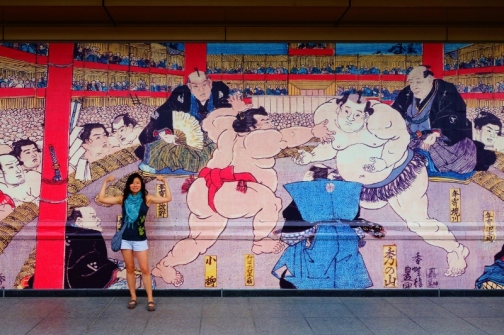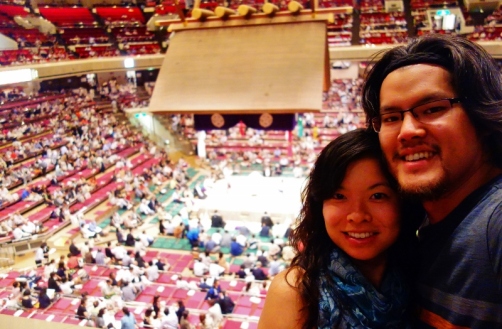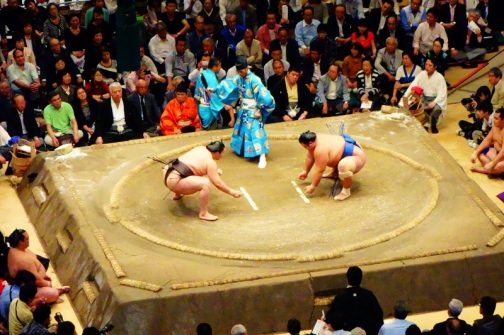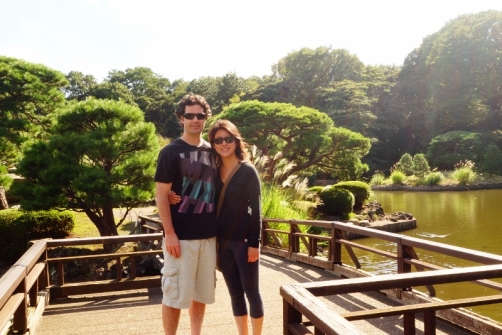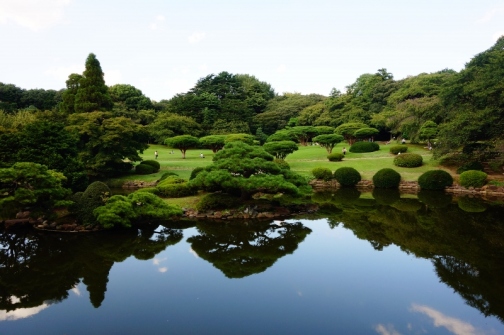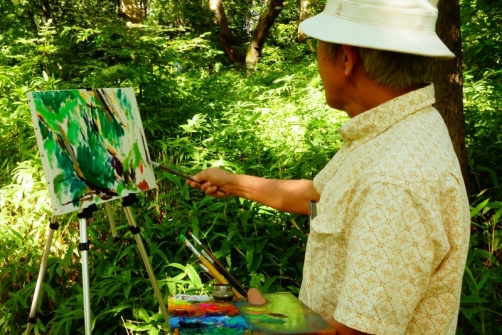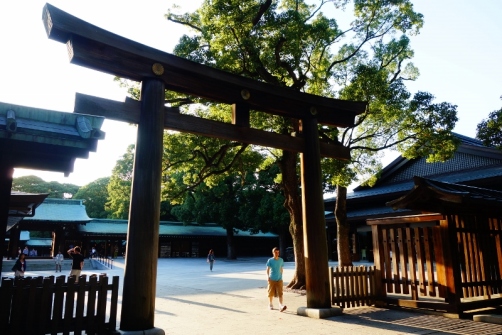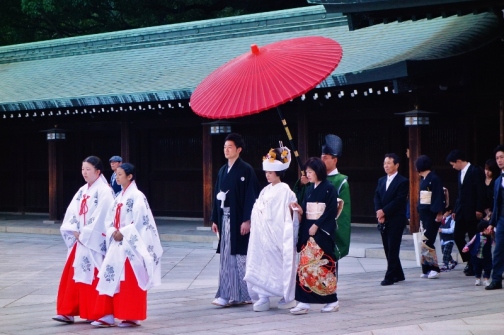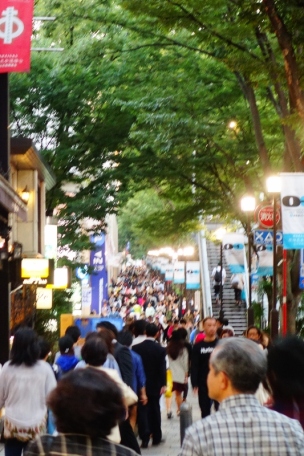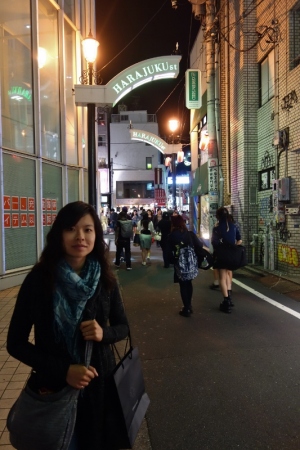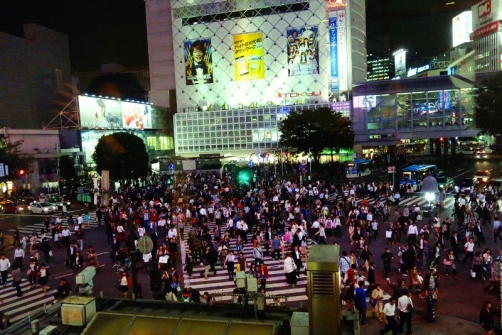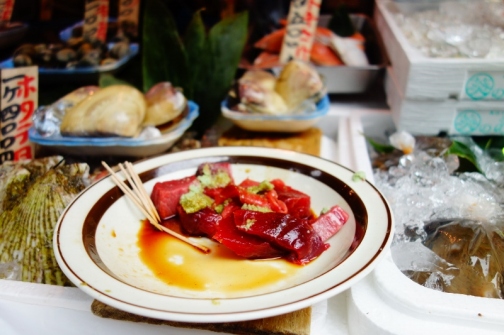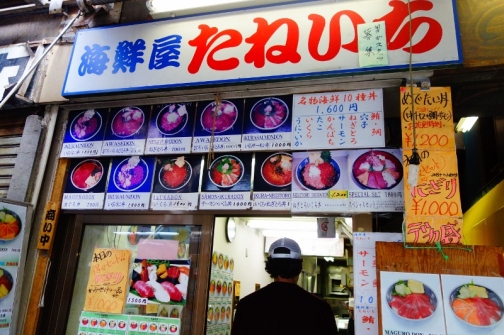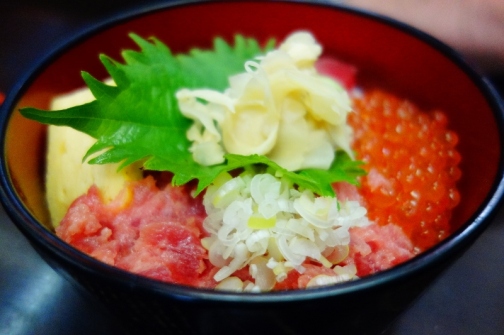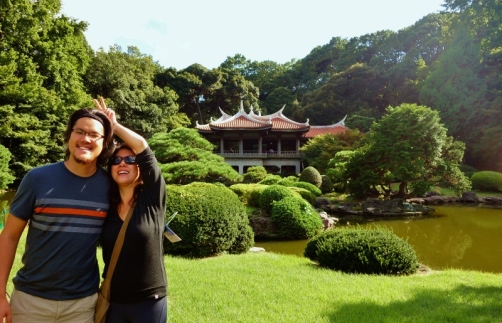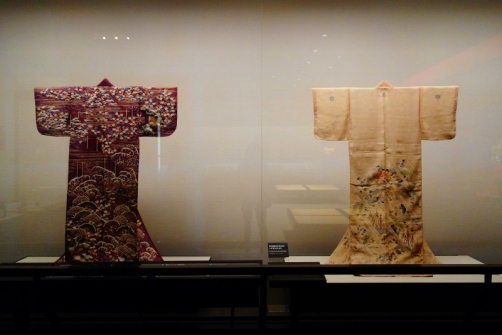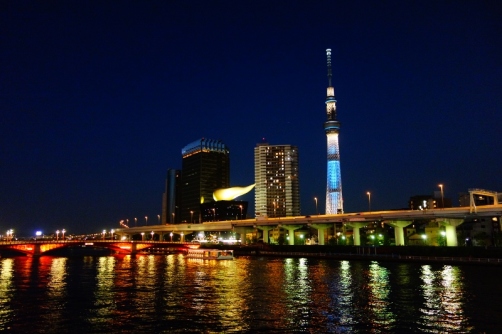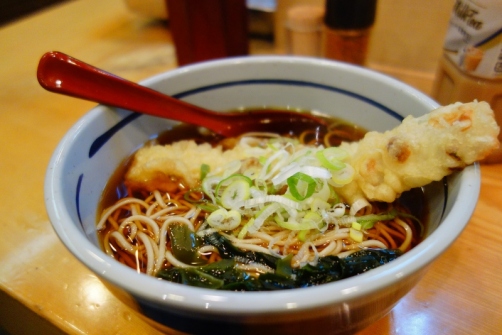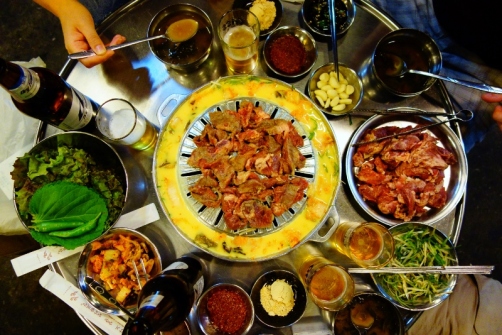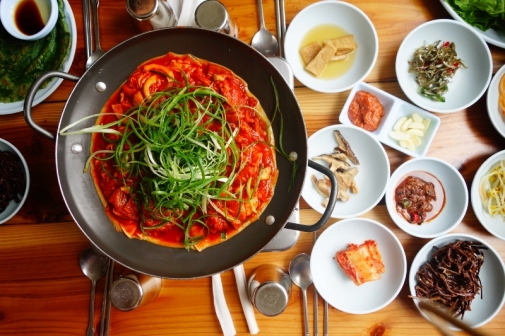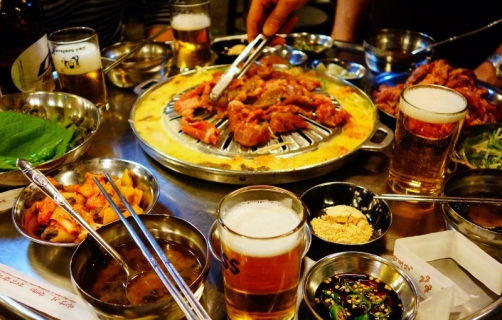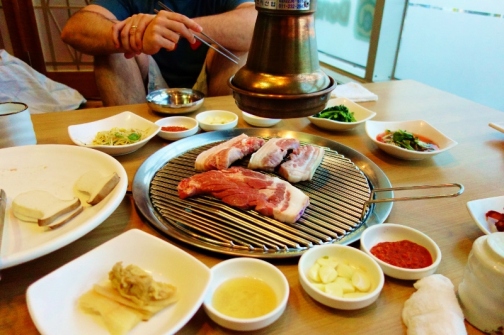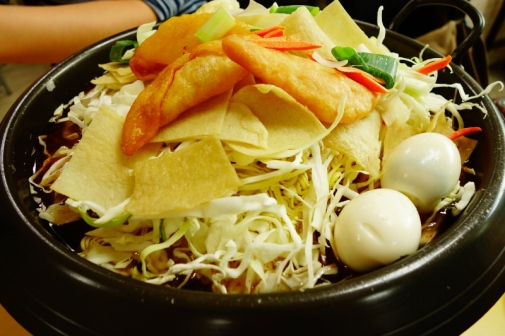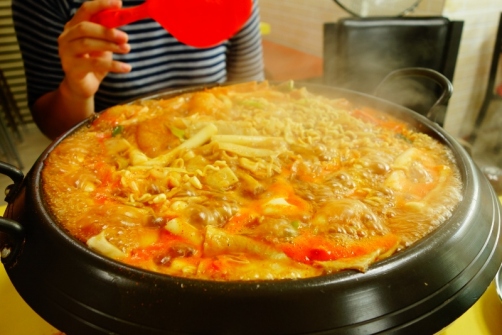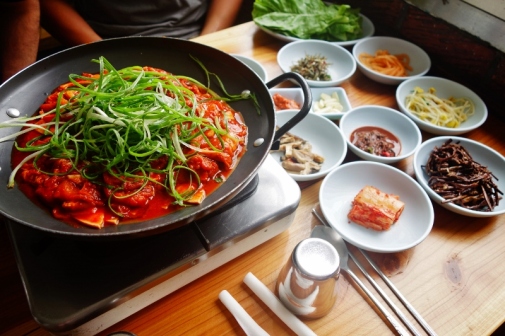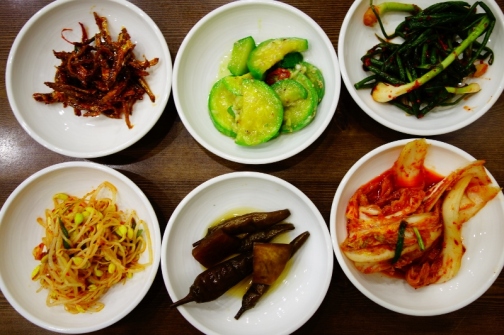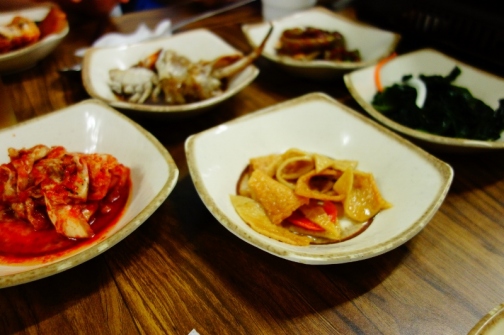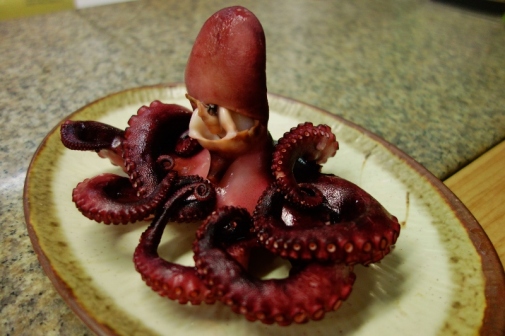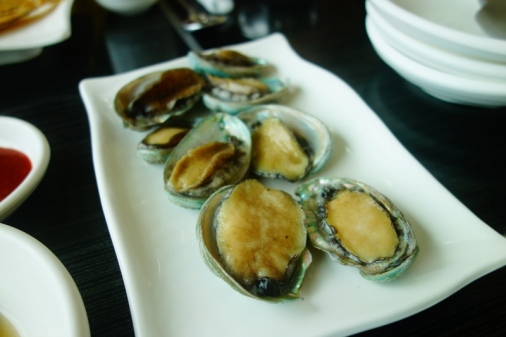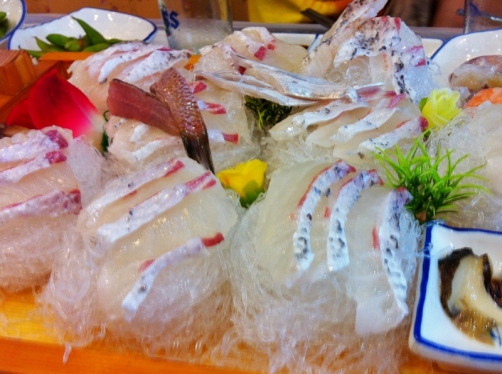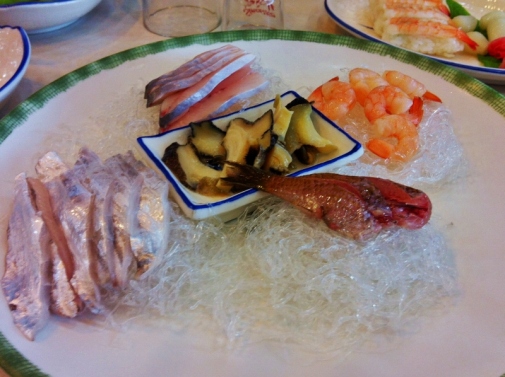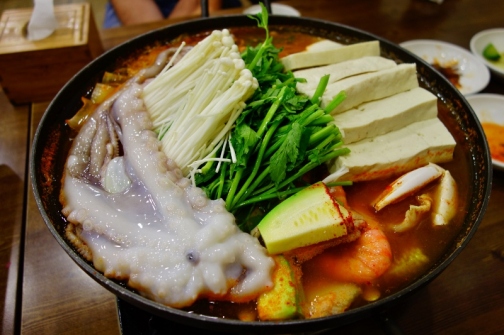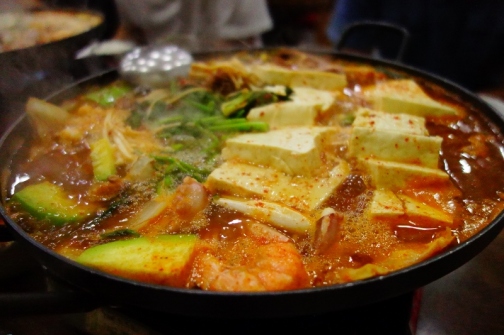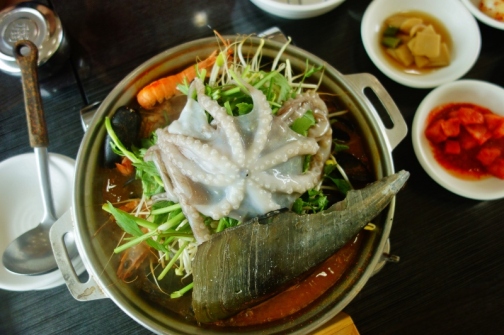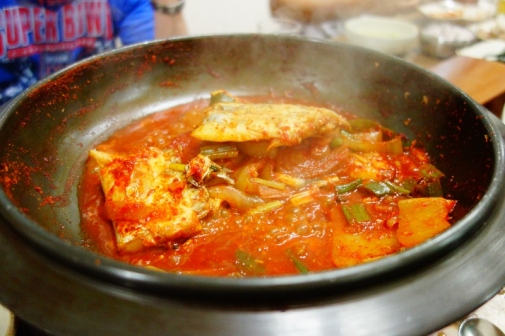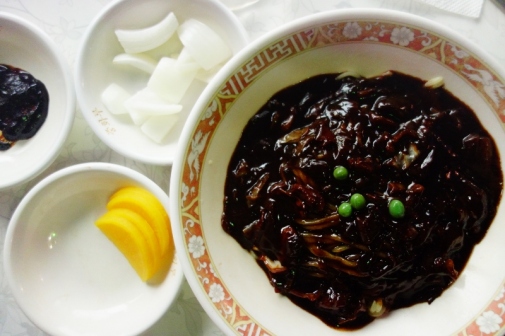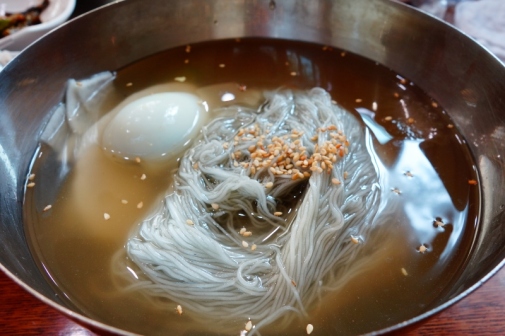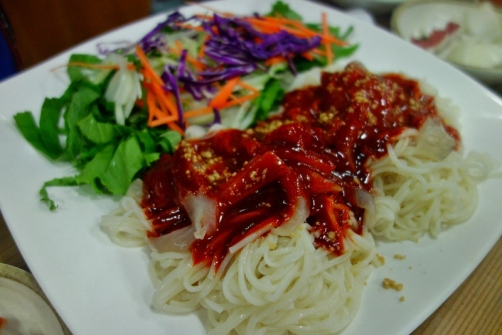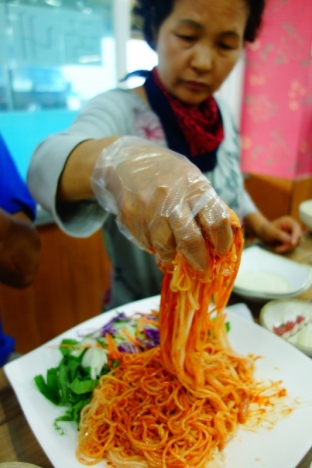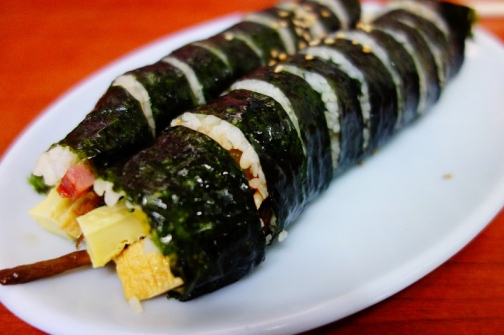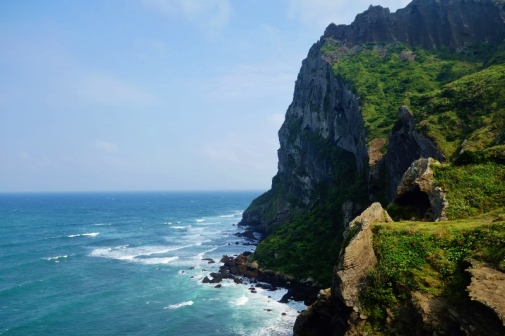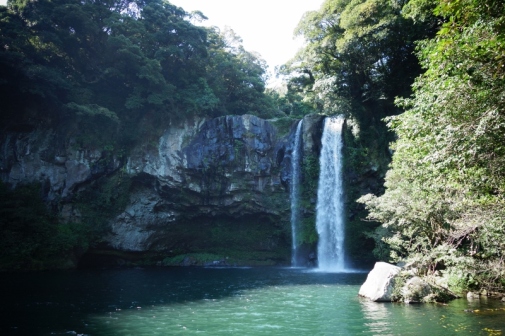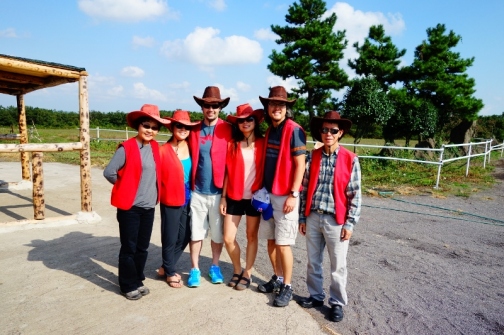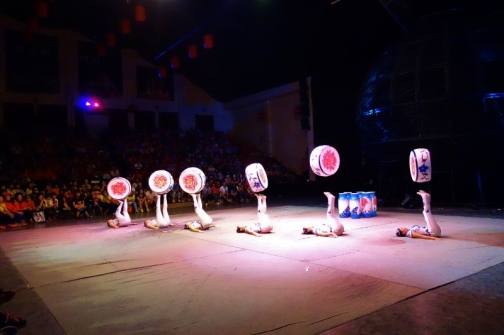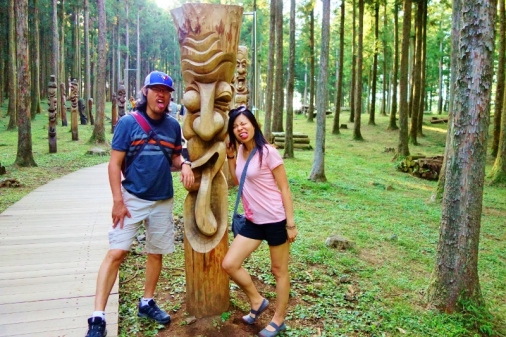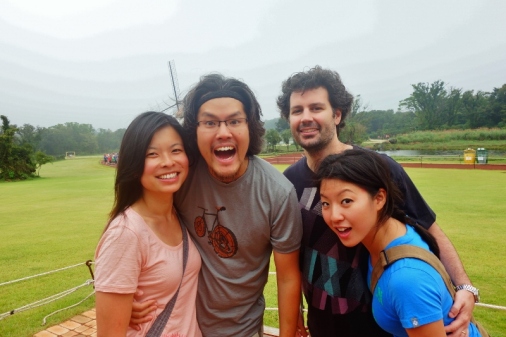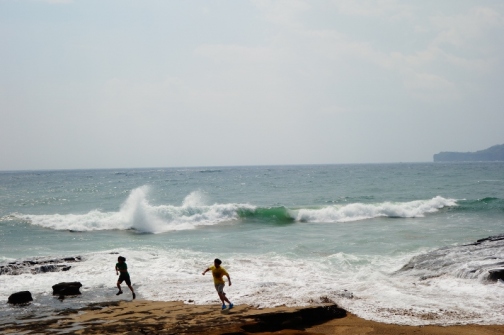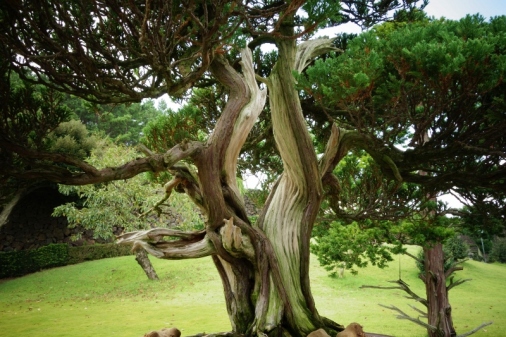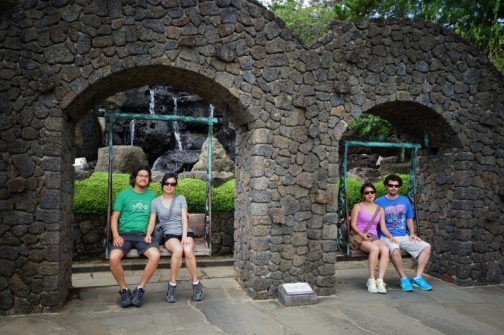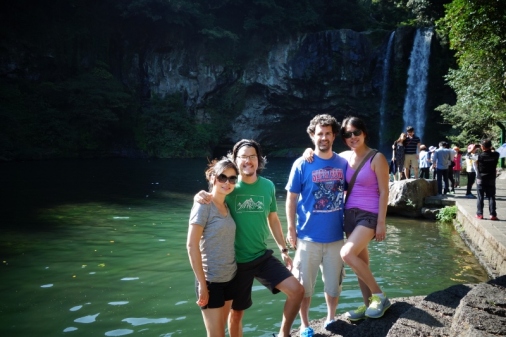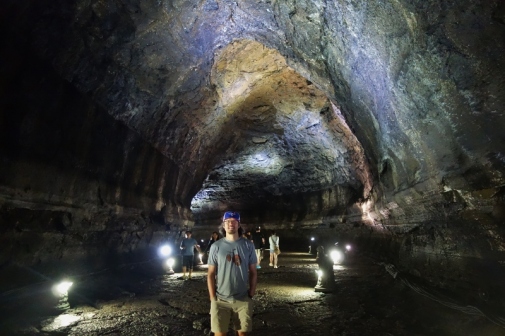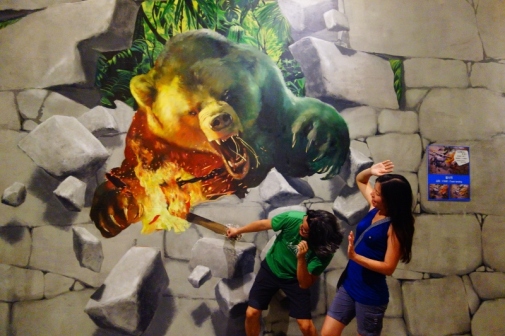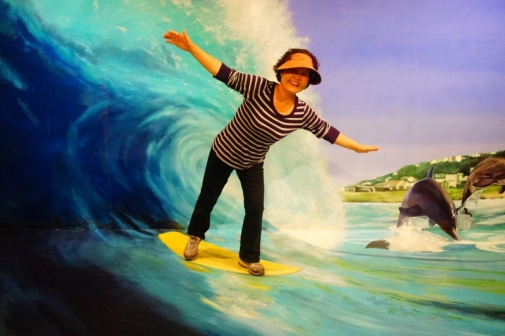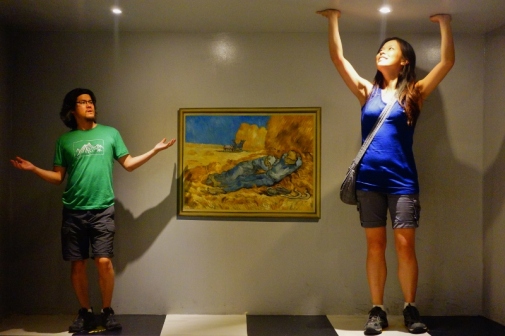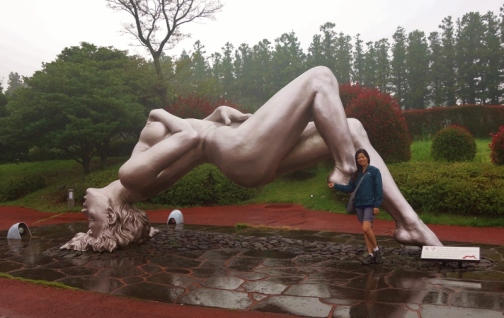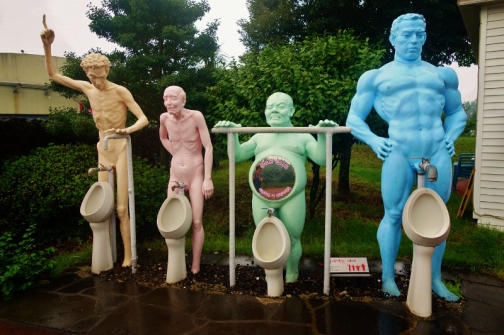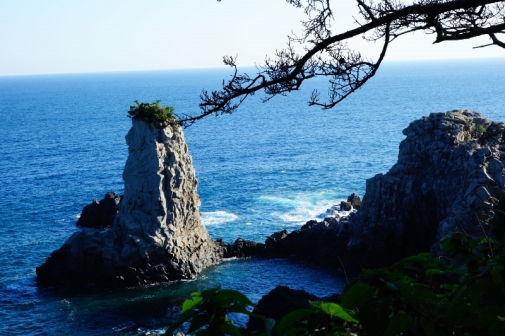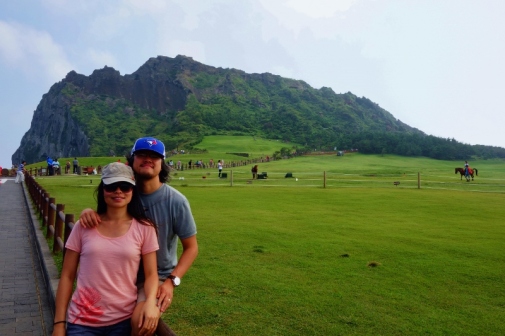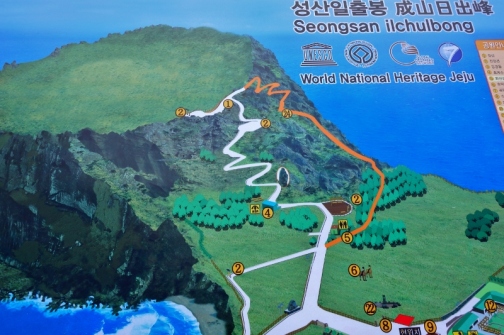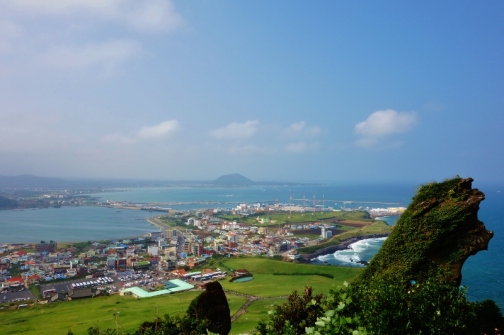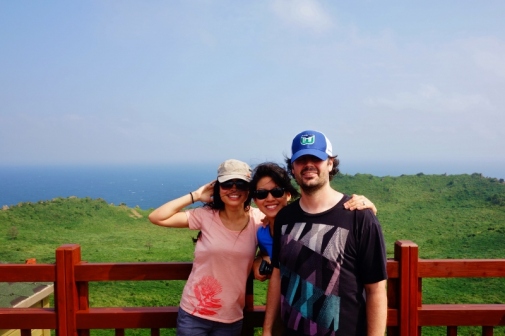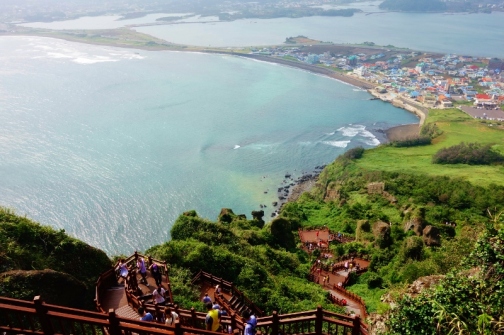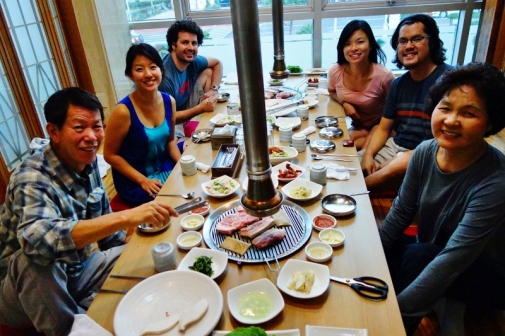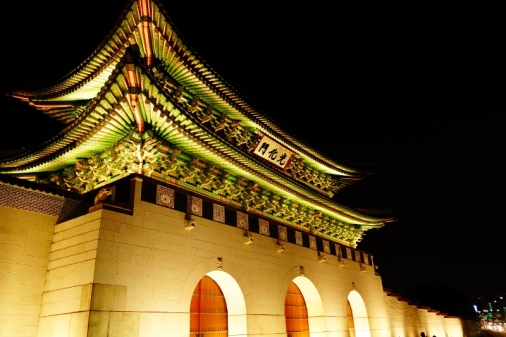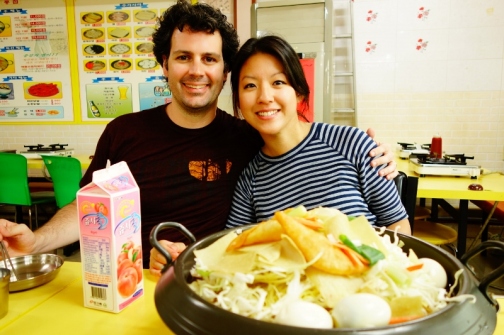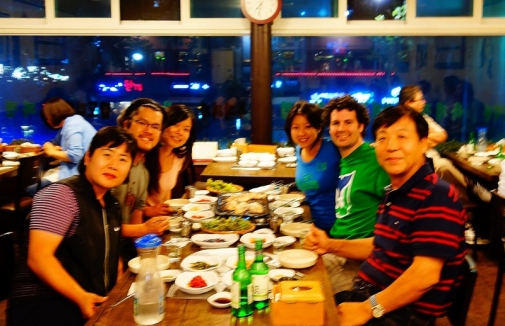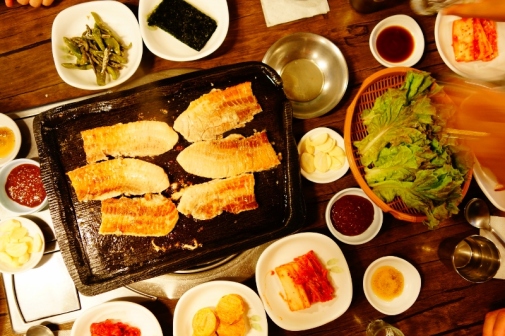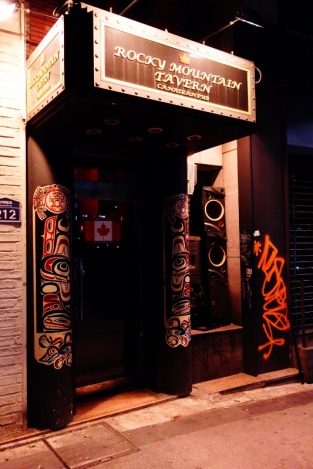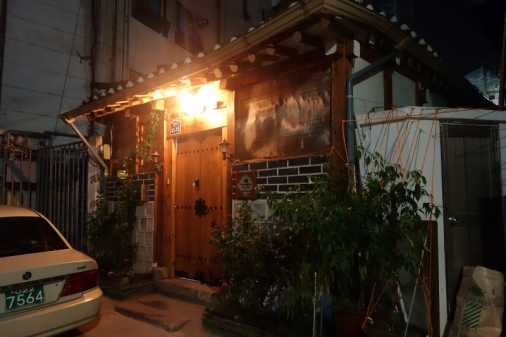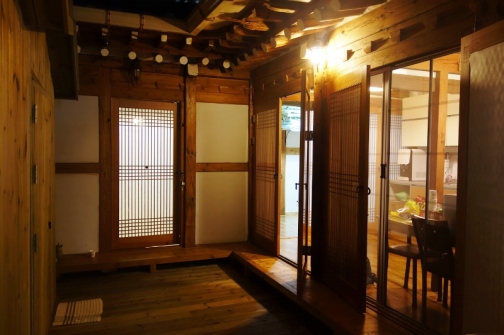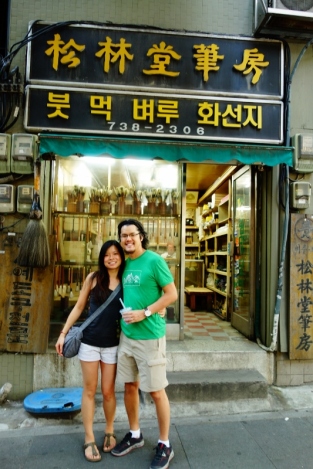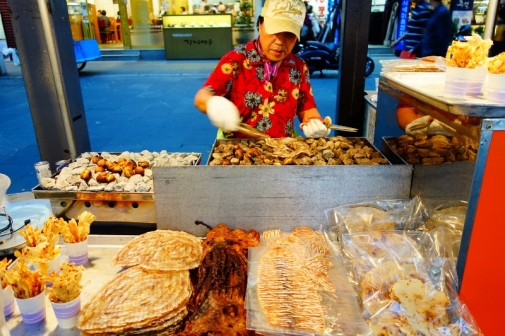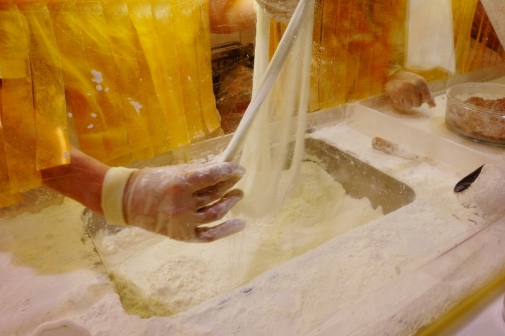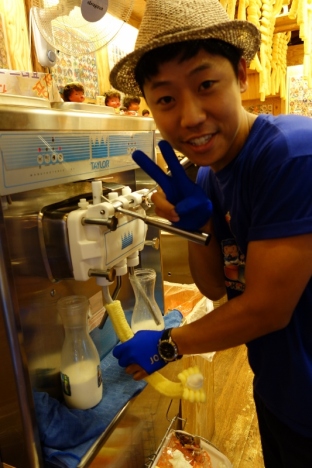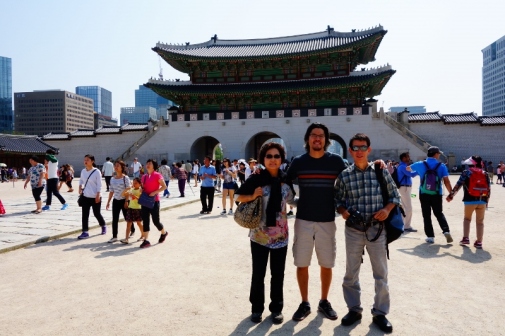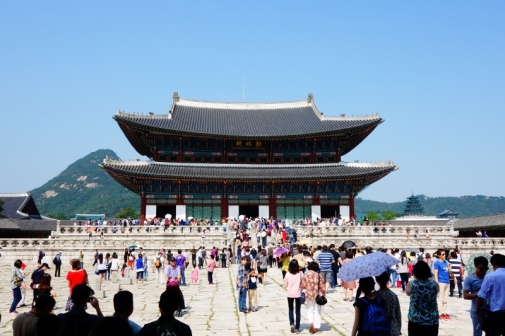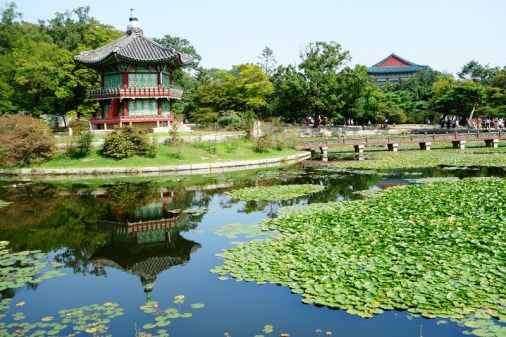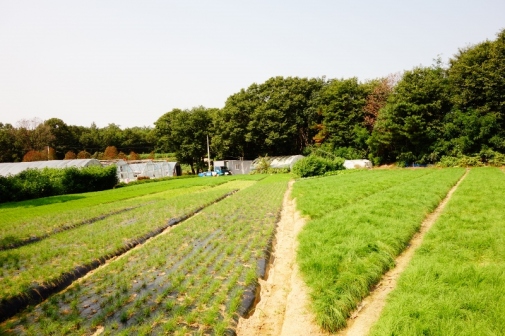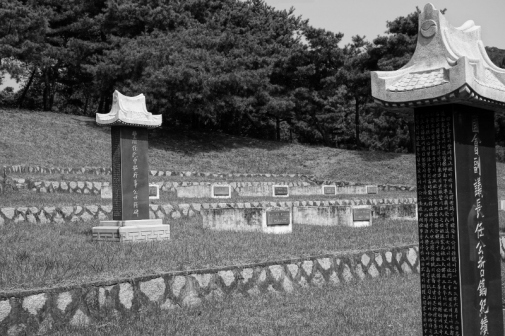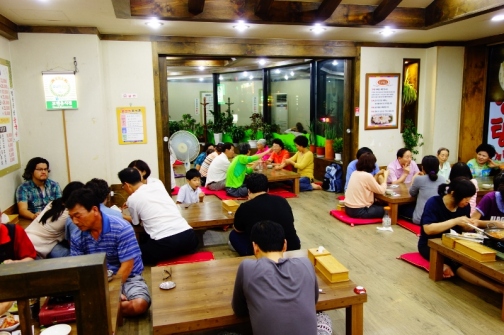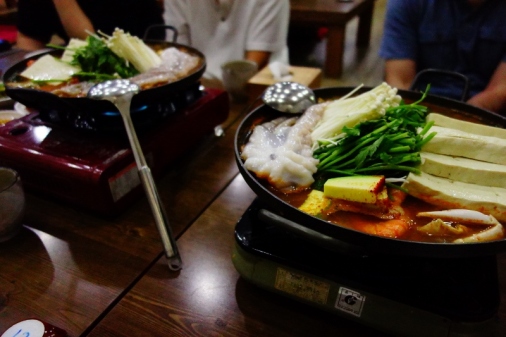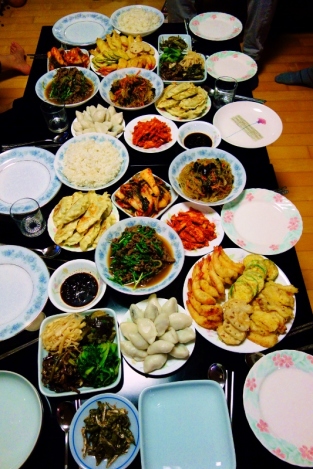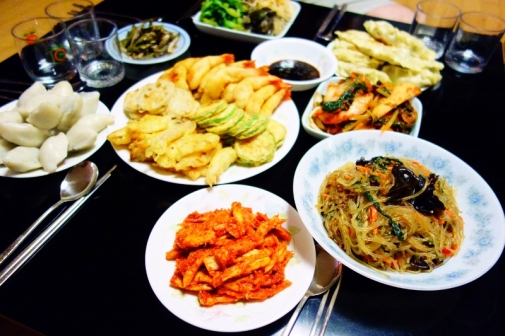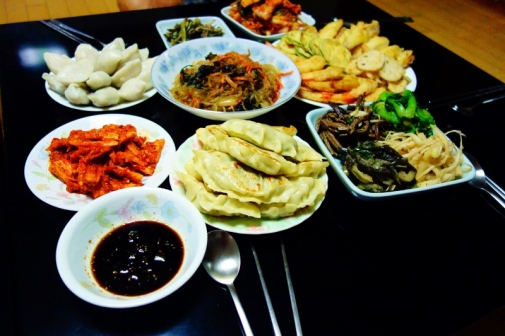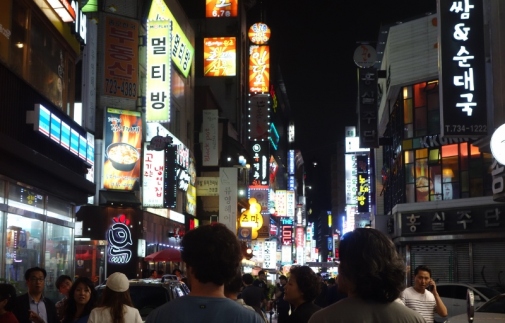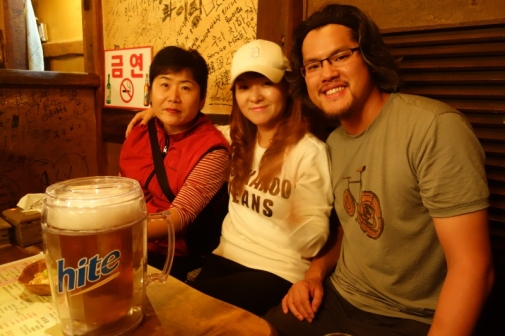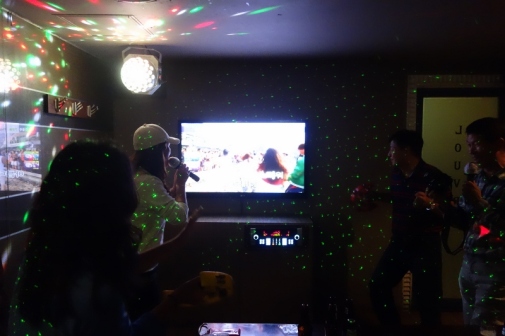It’s been about 8 years since my last visit to Japan. I normally don’t like visiting the same place twice – it’s actually a travel rule of mine. Why go to the same place, when there are so many places left in the world to discover?
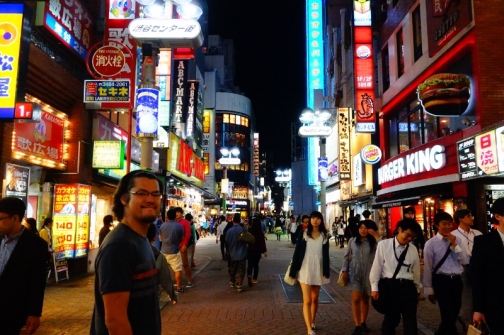
Jason walking down one of Tokyo’s typical streets at night – aglow with neon signs from every angle.
But once we arrived in Japan, I was definitely happy that I broke that rule. Besides, there were good reasons: 1) Jason had never been to Japan 2) Technically, I’m not visiting the same place twice. I visited Nagoya and Kyoto in 2005 – this time we’ll be in Tokyo. 3) Japan is pretty awesome.
Some small examples of Japan’s awesomeness:
Efficiency
The Japanese know how to get things done – and done well. Even small things like this public bathroom sink. Soap dispenser on the left side, water faucet in the middle, and hand dryer on the right. Just think of all the wasted steps we take from the sink to the hand dryer in Canada!
There are so many restaurants in Tokyo where you order through a vending machine up front, hand your order tickets to the chef, and voila! a quick and delicious bowl of noodles. Right there, you’ve eliminated the need for a server and a cashier. The cook doesn’t need to handle the money, so he can concentrate on quickly dishing out your lunch. Genius!
Transportation
Safe, clean, fast, and expansive. Tokyo’s metro system will get you almost anywhere, in no time flat, without any hassle. Safety barriers at most stations will make sure you arrive in one piece. It’s a little on the pricey side (minimum fare is about $1.70/ride compared to Seoul’s $0.90/ride but still nowhere near Toronto’s extortionate $3/ride) but you definitely get what you pay for (unlike the TTC in Toronto).
Courtesy
Even if YOU bumped into someone else on the subway, they will most likely bow and apologize. And I thought Canadians overused “I’m sorry”. Joking aside, it was a refreshing change to be around polite and courteous people after 3 months of being pushed out of the way in South America.
Snacks
Japan is the world leader of snacks. The variety and volume is astounding. I personally cannot get enough of chips and I can spend 10 minutes standing in front of the chip aisle just trying to select something new to try – wasabi-flavoured chips, seaweed puffs, ramen-flavoured crisps, shrimp crackers. The world is my oyster. Oh! Oyster-flavoured chips are pretty delish too.
Details
I’ve been to my fair share of ramen noodle houses in Toronto. And some of them are really good – rivaling some of the ones we’ve had here in Tokyo. But I’ve never been to a ramen noodle house that provides hair ties. No more strands of long hair falling into my face while I slurp up tasty, soupy ramen!
Jeanne and Dave had planned to spend 4 days in Tokyo, after our two weeks with family in Korea. It would’ve been a nice, romantic way to end their 3 weeks of travel in Asia. That is, until Jason and I decided to invite ourselves along at the last minute. 🙂
We ended staying in a roomy apartment in the Akasaka district. It’s a pretty great area: full of excellent restaurants and shops, right next to the entertainment district Roppongi, and close to several metro lines.
The awesome thing about travelling with Jeanne and Dave is that Dave is an excellent vacation planner. Jason and I were not in the habit of planning since we’ve been travelling for so long and taking our time at each place we visited. Usually, our planning goes like this: “So what do you want to do today?”
So it was pretty great to have Dave plan out our 4 days in Tokyo. Four days isn’t a lot of time to see a city that’s larger than life, so planning our time there became a lot more important.
What’s a visit to Japan without taking in a Sumo wrestling match?
The best seats in the house are on the bottom level. This area is split into sections and Sumo fans sit on seat cushions directly on the floor. They’re fairly big cushions so they’re not as uncomfortable as you’d think. They also serve as ways for fans to express disappointment. We were told by Jeanne’s friend who lives in Tokyo that when fans are unhappy with a ruling or outcome, they throw their seat cushion onto the ring/judge/wrestler. Technically, it’s prohibited but people still do it anyway.
It was our first time at a Sumo match and we didn’t really know what to expect. The only thing we knew about Sumo are the stereotypes of fat men pushing each other. A Sumo tournament starts early in the afternoon with the more junior competitors vying for the sparse crowd’s attention. It builds up over the next 4-5 hours until the top division of wrestlers make their appearance – with much fanfare.
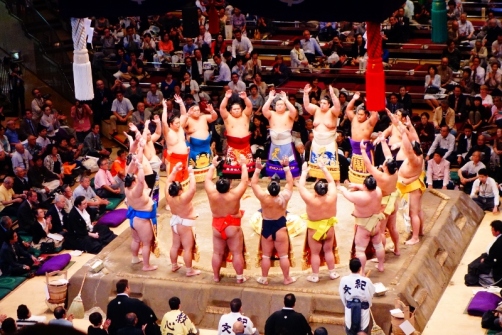
The top wrestlers (makuuchi division) come out with huge fanfare for the final round of competitions of the night.
The top division (called makuuchi) are the best wrestlers of the country and receive the most attention from the (now) packed arena. The top of this group is the yokozuna.
The most exciting bout of the night (IMO) was that between the yokozuna and the wrestler who ranked just under him (ozeki). You’ll have to view the video below to see what happens. Let’s just say seat cushions flew.
Tokyo can be a pretty chaotic city. With over 13 million people living in the Tokyo prefecture, some peace and quiet can be pretty hard to come by. Luckily, Tokyo has its fair share of giant parks. Once inside, it’s hard to imagine you’re still in Tokyo. We visited Shinjuku Gyeon (or Shinjuku park) – one of Tokyo’s largest and most popular parks. Inside, amongst forested areas, there’s a traditional Japanese landscape garden, a sprawling English landscape garden, and a formal French garden.
We also visited the Meiji Shrine (adjacent to another popular park – Yoyogi park).
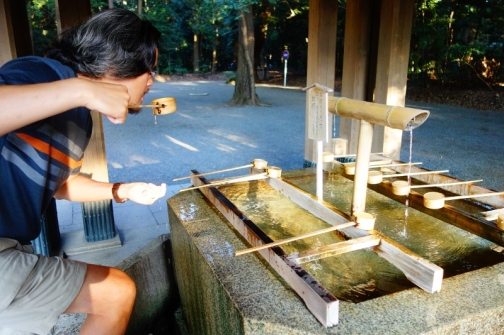
It’s customary to wash your hands and mouth before entering the Meiji Shrine. Apparently, there’s a very specific way to do it. But I don’t think any of us knew how to.
We were even lucky enough to see a traditional Shinto wedding procession. It was beautiful to watch.
We followed that with some shopping time in popular shopping districts: Shibuya and Harajuku. All the Harajuku girls must’ve been in school, I spotted only a few and I couldn’t take any pictures quick enough – they must’ve been rushing off to class.
Shibuya is also home to the busiest pedestrian crossing in the world. We settled into one of the window seats in Starbucks, which gives you a great birdseye view of the intersection. It was kinda nuts. During particularly busy crossings, it doesn’t even look like an intersection anymore – more like an outdoor concert!
We wanted to visit the Tsukiji fish market one morning to have fresh sushi for breakfast. Apparently, you can pick out fresh fish at the market and get one of the nearby food stalls to prepare it for your breakfast. Sushi = breakfast of champions!
We went to sleep with visions of sushi dancing in our heads, but when we arrived at the fish market the next day, we were sadly greeted with an empty market.
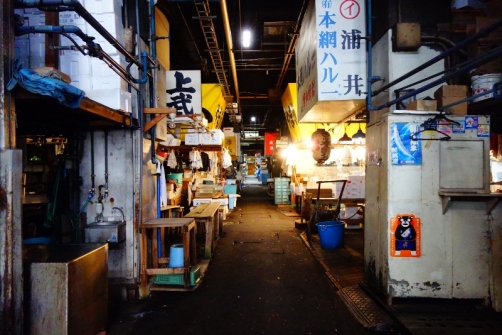
Inside the Tsukiji fish market when it was closed. Only one lonely employee was doing some overtime to finish up some work…must have been goofing off the day before.
They were closed for a national holiday and we had to fly out of Tokyo later that day. Our dreams of fresh sushi for breakfast were dashed! We stood in the front of the fish market for awhile, lamenting our fate when a kind security guard noticed our sad little group. He told us about a smaller market nearby that was still open.
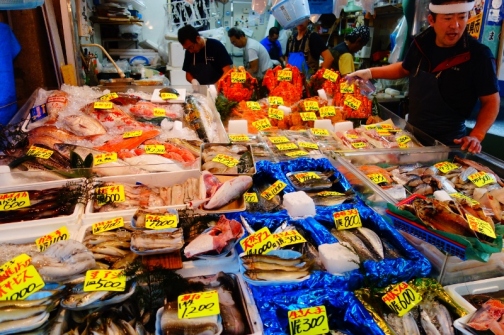
The smaller fish market just a few blocks down from Tsukiji. It was still packed with many stalls of delicious-looking seafood.
A little disappointed that Tsukiji was closed, but happy that we would still be able to have fresh fish for breakfast, we started whetting our appetite with free sashimi samples as we staked out a good breakfast restaurant.
We decided on this restarant pictured below (we really appreciated menus with pictures in Tokyo) and excitedly ordered four bowls of fresh sashimi over a bowl of rice.
Perfect bowls of fresh sashimi over a bed of rice arrived and as we dug in, no further words were exchanged until every bowl was licked clean. It was everything we had hoped it would be…and more.
Even though Jason and I invited ourselves along to Tokyo, we DID spend a little time apart to give Jeanne and Dave some time alone (I’m sure Jeanne can only take her little brother for so long..haha)
Jason and I checked out the Edo-Tokyo Museum. It was really interesting to learn about the history of Tokyo and how it grew from the its origins as the little fishing village of Edo.
Strolled along the Sumida river banks by moonlight.
And ate a lot more ramen, soba, and sushi 🙂
It was a quick and wonderful four days in Tokyo. We would definitely want to come back one day. I can’t wait to break my travel rule again.

